Cell
A cell is the basic structural and functional unit of all living organisms. It is the smallest unit of life that can replicate independently. Cells were first discovered by Robert Hooke in 1665 when he observed a piece of cork under a microscope and saw small, box-like compartments which he named "cells."
Types of Cells
There are two main types of cells:
- Prokaryotic Cells: These are simple cells that do not have a nucleus or other membrane-bound organelles. Examples include bacteria and archaea.
- Eukaryotic Cells: These are more complex cells that have a nucleus and other membrane-bound organelles. Examples include cells in plants, animals, fungi, and protists.
Cell Structure
The typical eukaryotic cell contains the following structures:
- Cell Membrane: A semi-permeable barrier that surrounds the cell and regulates the passage of substances in and out of the cell.
- Nucleus: The control center of the cell that contains the genetic material (DNA).
- Cytoplasm: The gel-like substance inside the cell where organelles are suspended.
- Organelles: Specialized structures within the cell that perform specific functions, such as the endoplasmic reticulum, Golgi apparatus, mitochondria, and chloroplasts (in plant cells).
Cell Functions
Cells carry out various functions to maintain life, including:
- Metabolism: The chemical processes that occur within the cell to maintain life.
- Growth and Reproduction: Cells grow and divide to produce new cells through processes like mitosis and meiosis.
- Response to Stimuli: Cells can respond to changes in their environment.
- Homeostasis: Cells work to maintain a stable internal environment despite external changes.
Study Guide
To study cells, it's important to understand their structure, function, and types. Here are some key points to focus on:
- Identify and label the different parts of a eukaryotic cell, including the nucleus, cell membrane, and organelles.
- Compare and contrast prokaryotic and eukaryotic cells, noting their similarities and differences.
- Understand the functions of different organelles within the cell and how they contribute to overall cell function.
- Explore cell division processes such as mitosis and meiosis, and how they contribute to growth and reproduction.
- Examine the role of cells in maintaining homeostasis and responding to environmental stimuli.
By mastering these concepts, you'll gain a comprehensive understanding of the fundamental unit of life - the cell.
[Cell] Related Worksheets and Study Guides:
.◂Science Worksheets and Study Guides Kindergarten. Weather
Coloring Worksheet Calendar
Calendar  Coloring Worksheet
Coloring Worksheet Calendar
Calendar  Coloring Worksheet
Coloring Worksheet Day and Night
Day and Night  Coloring Worksheet
Coloring Worksheet Day and Night
Day and Night  Coloring Worksheet
Coloring Worksheet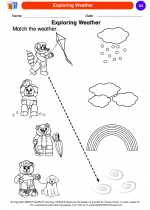 Exploring Weather
Exploring Weather  Coloring Worksheet
Coloring Worksheet Exploring Weather
Exploring Weather  Coloring Worksheet
Coloring Worksheet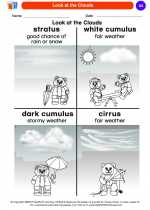 Look at the Clouds
Look at the Clouds  Coloring Worksheet
Coloring Worksheet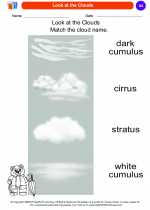 Look at the Clouds
Look at the Clouds  Coloring Worksheet
Coloring Worksheet Moon & Stars
Moon & Stars  Coloring Worksheet
Coloring Worksheet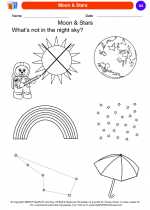 Moon & Stars
Moon & Stars  Coloring Worksheet
Coloring Worksheet Natural Events
Natural Events  Coloring Worksheet
Coloring Worksheet Natural Events
Natural Events  Coloring Worksheet
Coloring Worksheet Sun and Shadows
Sun and Shadows  Coloring Worksheet
Coloring Worksheet Sun and Shadows
Sun and Shadows  Coloring Worksheet
Coloring Worksheet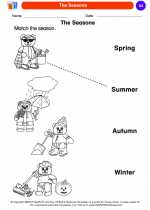 The Seasons
The Seasons  Coloring Worksheet
Coloring Worksheet The Seasons
The Seasons  Coloring Worksheet
Coloring Worksheet Things in the Sky
Things in the Sky  Coloring Worksheet
Coloring Worksheet Things in the Sky
Things in the Sky  Coloring Worksheet
Coloring Worksheet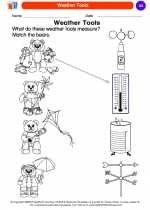 Weather Tools
Weather Tools  Coloring Worksheet
Coloring Worksheet Weather Tools
Weather Tools 

 Coloring Worksheet
Coloring Worksheet
 Coloring Worksheet
Coloring Worksheet
 Coloring Worksheet
Coloring Worksheet
 Coloring Worksheet
Coloring Worksheet
 Coloring Worksheet
Coloring Worksheet
 Coloring Worksheet
Coloring Worksheet
 Coloring Worksheet
Coloring Worksheet
 Coloring Worksheet
Coloring Worksheet
 Coloring Worksheet
Coloring Worksheet
 Coloring Worksheet
Coloring Worksheet
 Coloring Worksheet
Coloring Worksheet
 Coloring Worksheet
Coloring Worksheet
 Coloring Worksheet
Coloring Worksheet
 Coloring Worksheet
Coloring Worksheet
 Coloring Worksheet
Coloring Worksheet
 Coloring Worksheet
Coloring Worksheet
 Coloring Worksheet
Coloring Worksheet
 Coloring Worksheet
Coloring Worksheet
 Coloring Worksheet
Coloring Worksheet

The resources above cover the following skills:
EARTH AND SPACE SCIENCE (NGSS)
Earth’s Systems
Students who demonstrate understanding can:
Use and share observations of local weather conditions to describe patterns over time.